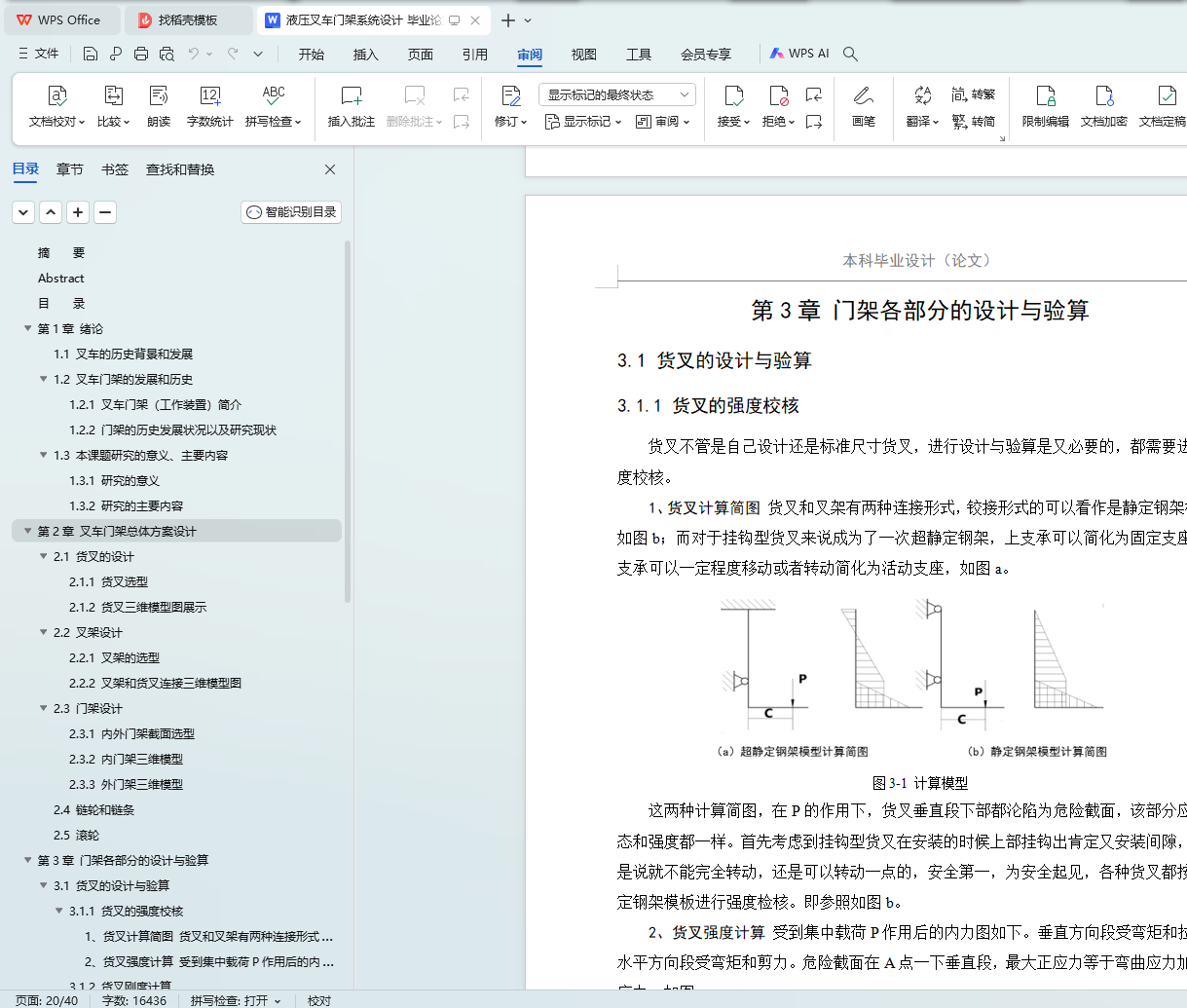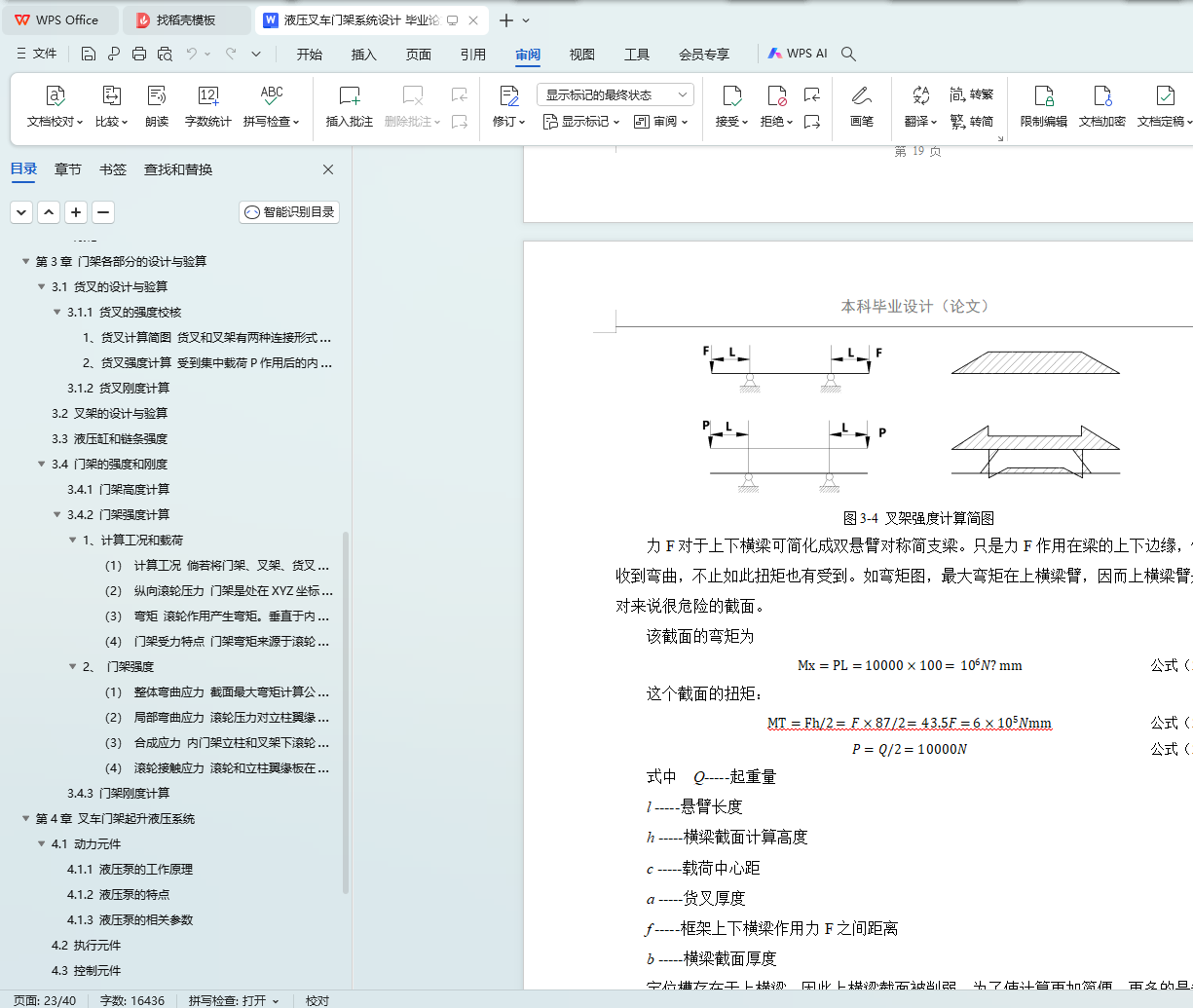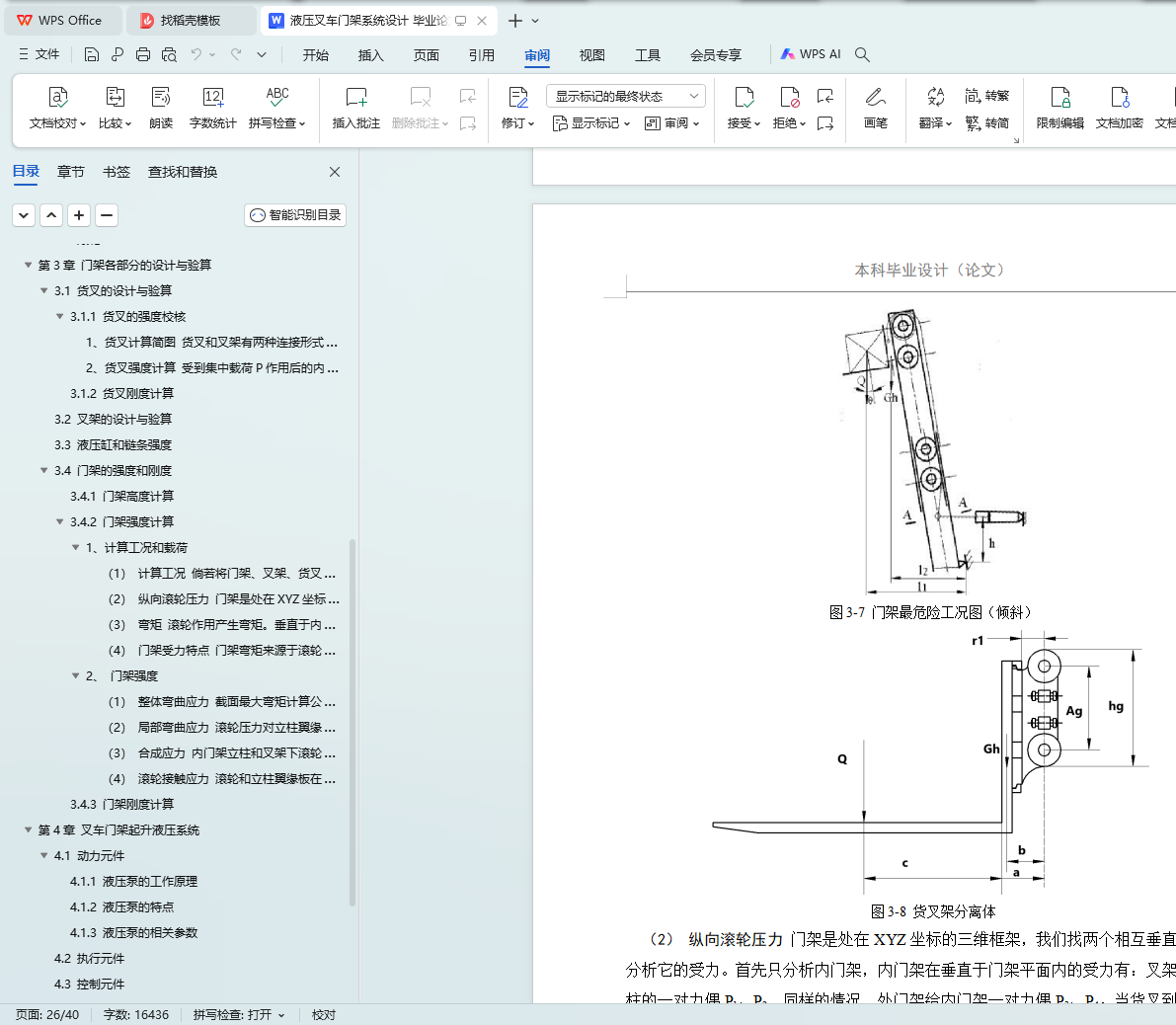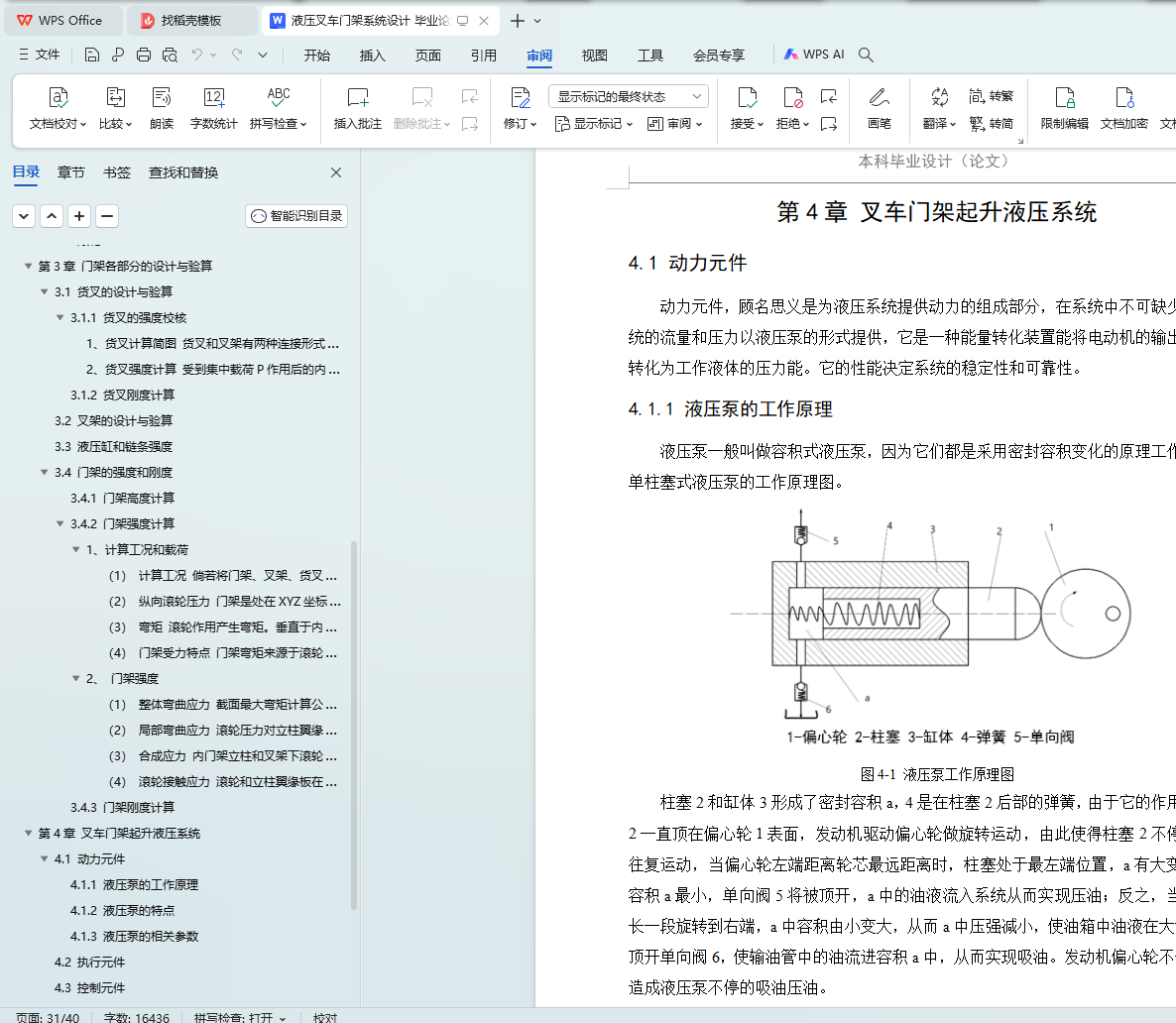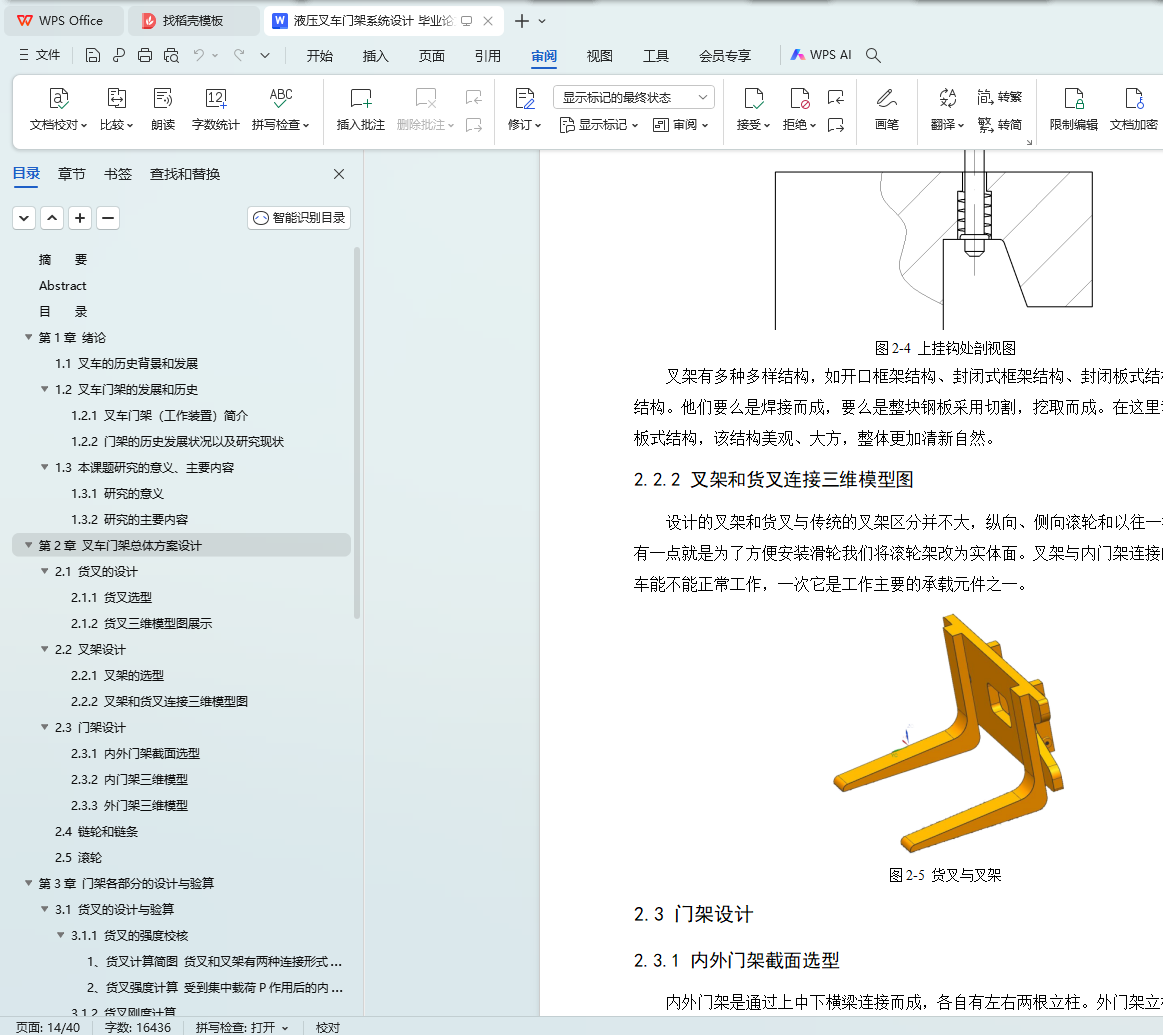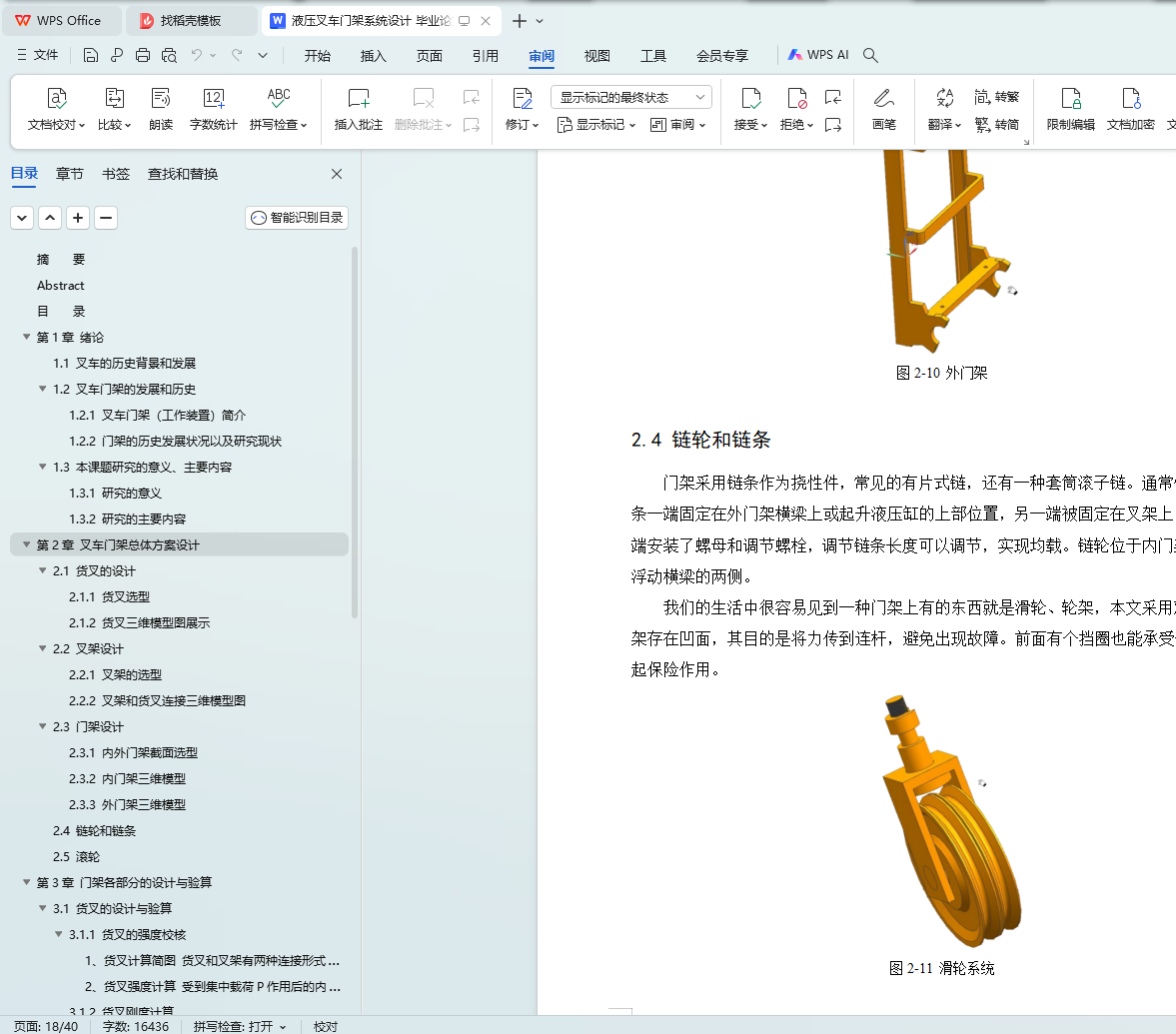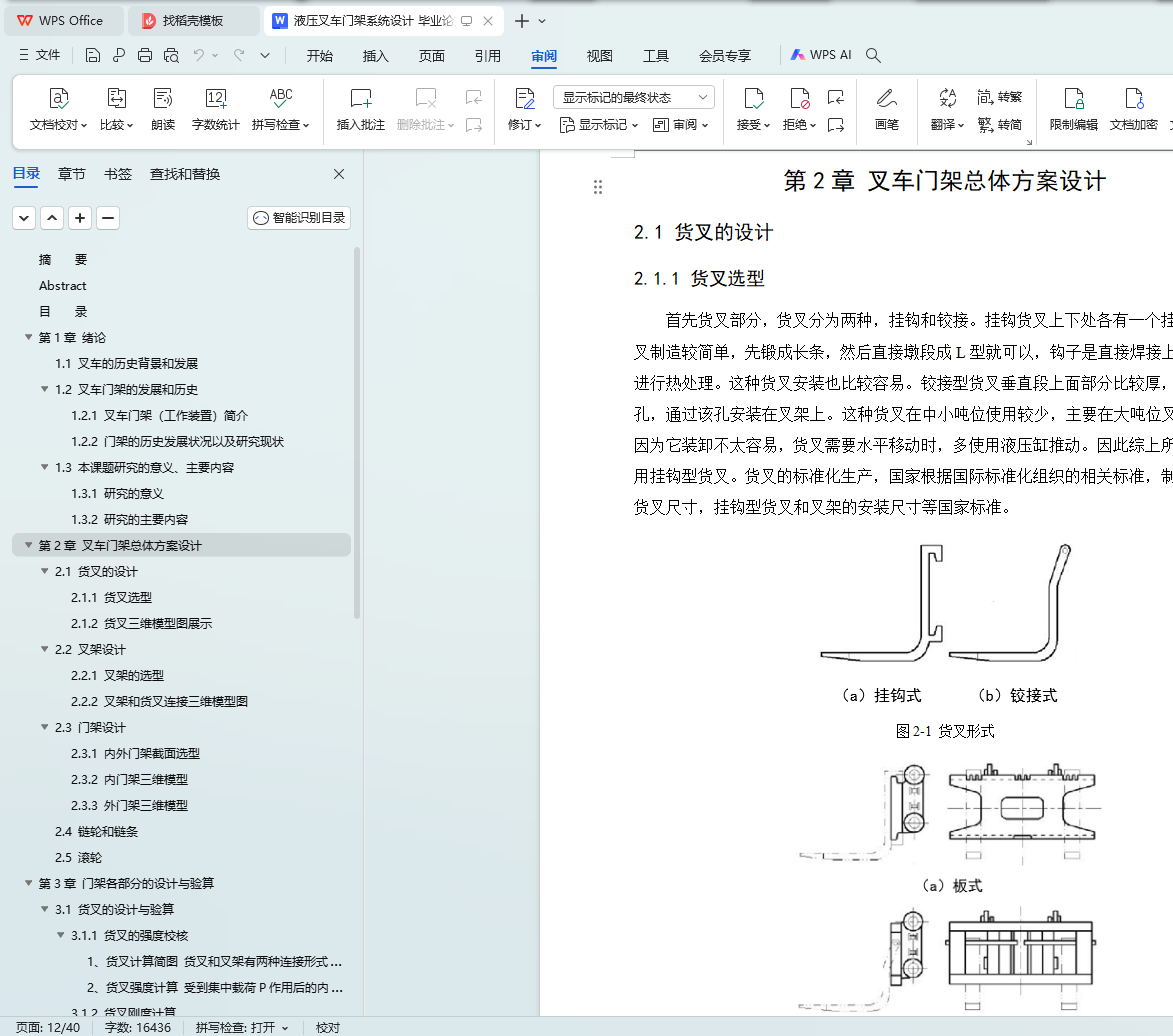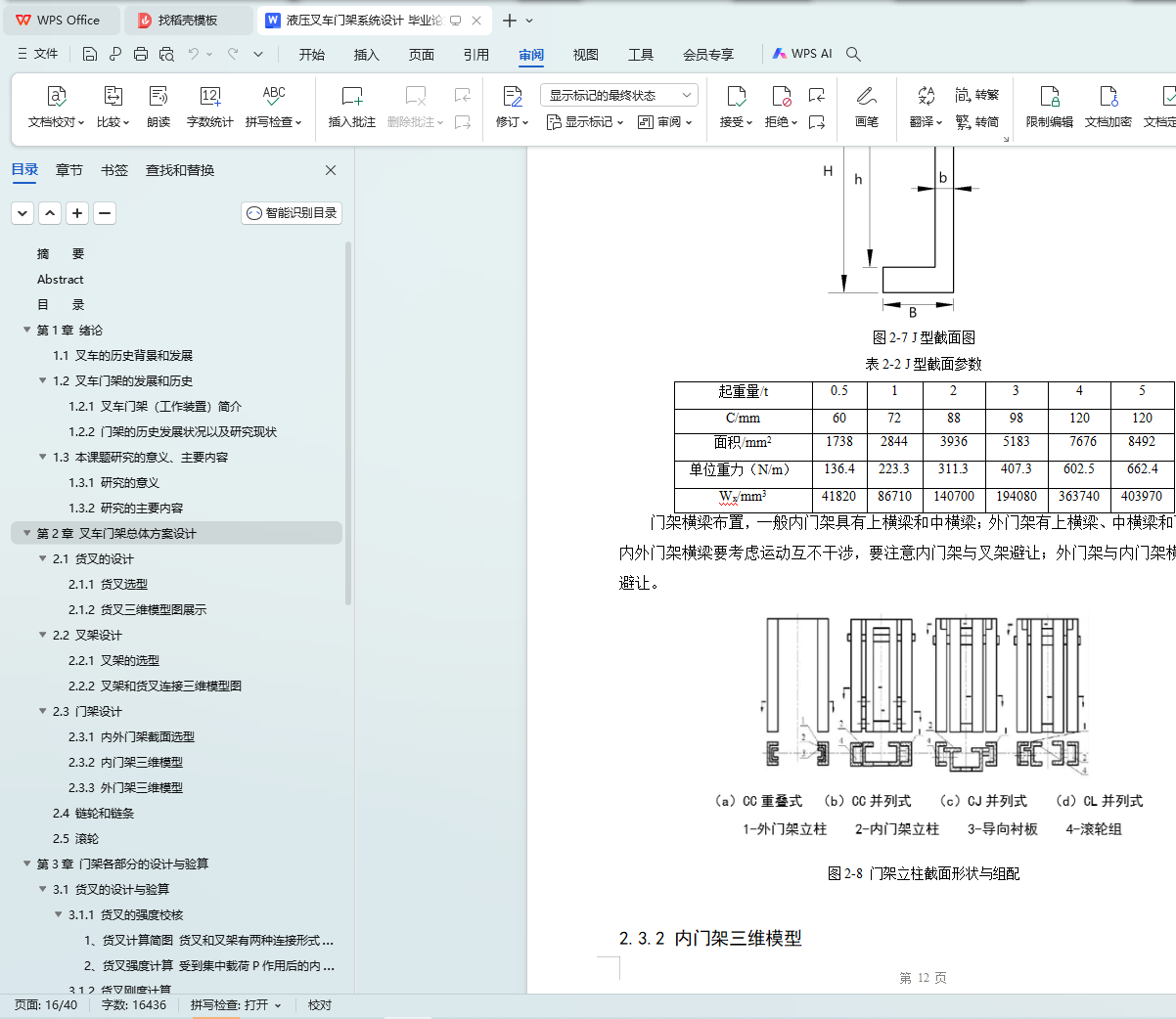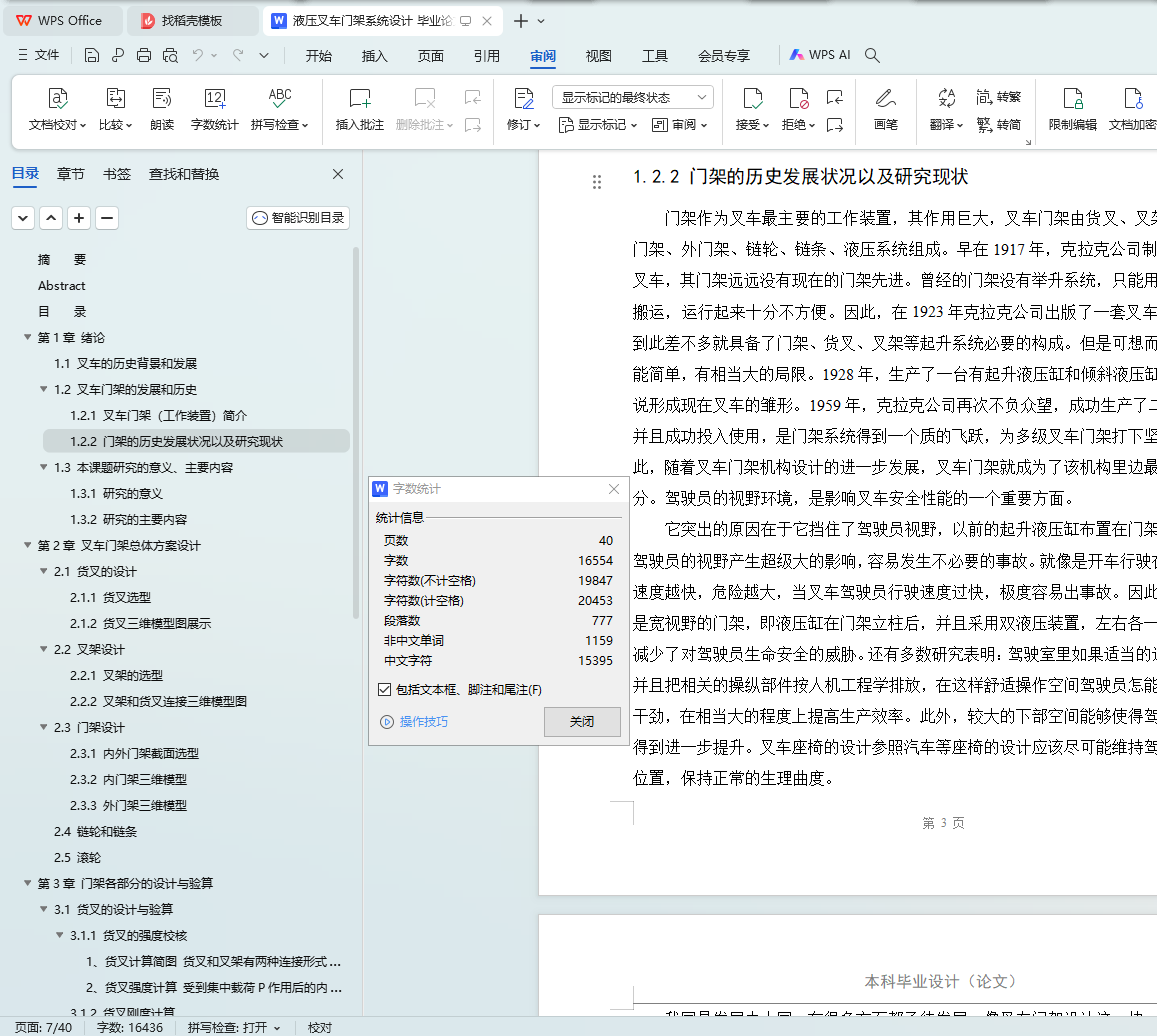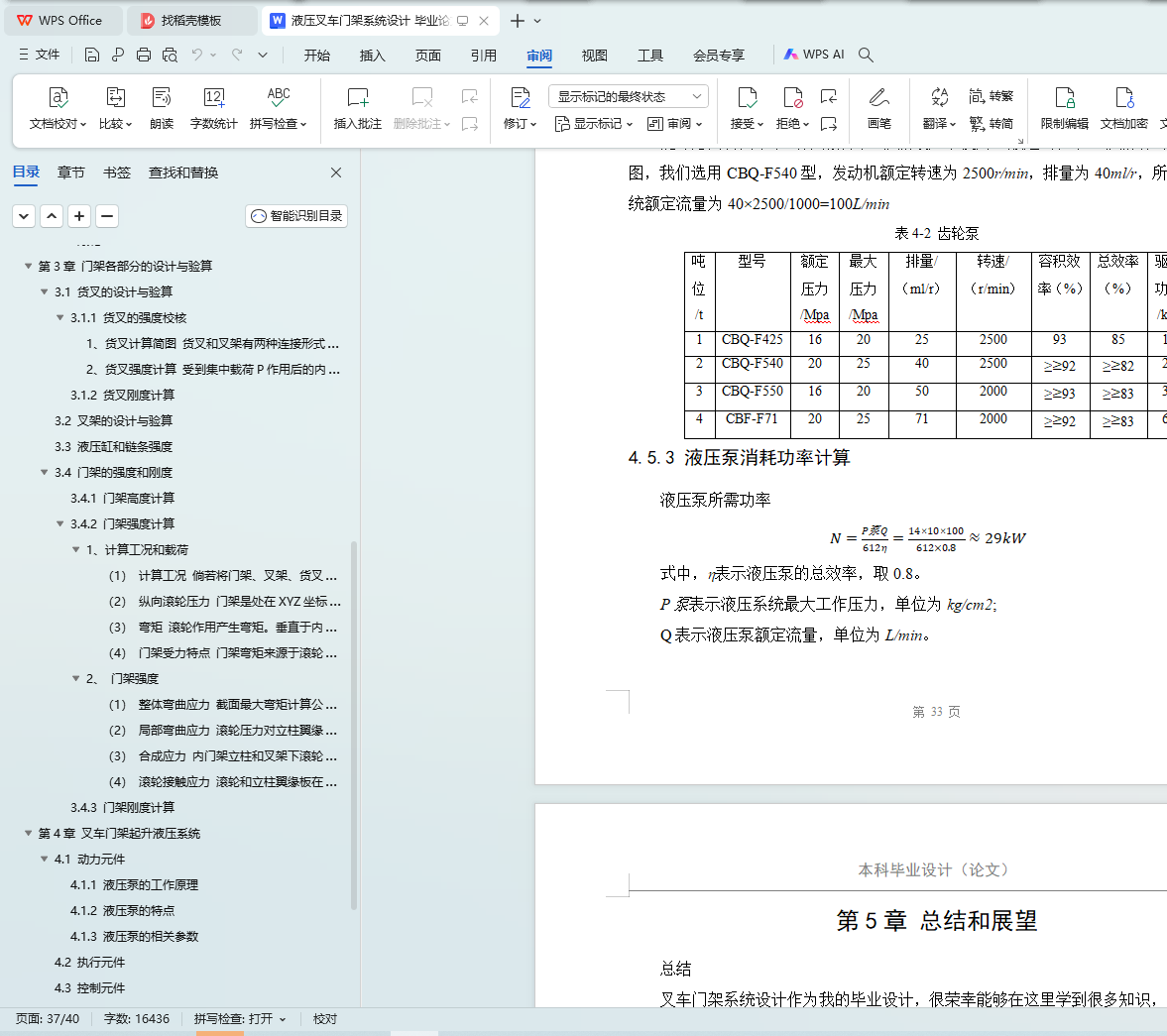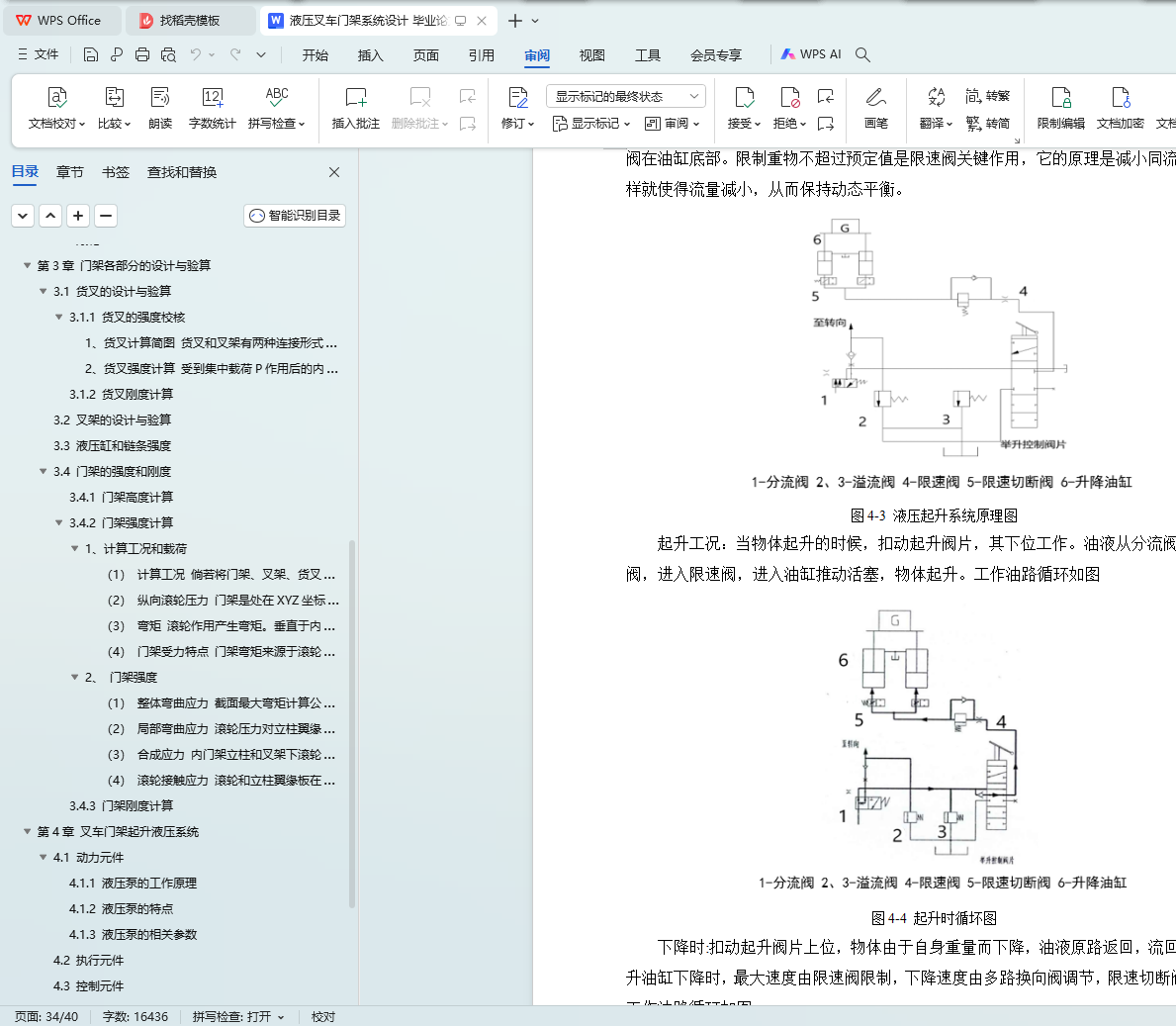摘 要
随着物流产业的迅速发展,叉车行业也发展迅速,未来叉车主要发展的地方绝不只是在生产和销售,租赁在我国也将成为一个新的市场,而叉车在迅猛突破其可能性的时候,叉车门架系统也亟待提升,有句话说得好,部分的提升才能带动整体的提升。叉车门架系统是叉车的工作装置,它在叉车的装卸、堆垛起到关键作用。
本次设计主要针对大学四年学习的总结,在设计中提升自我,本次设计完成了叉车门架各部分机构的选型,对于机构各部分连接清晰的表示出来,本次设计的主要内容如下。
对于货叉,选用国家标准设计,并符合设计任务书;对于叉架来说,选择相对于大部分叉车来说比较美观、性价比不错的开口板式叉架;门架采用CJ型,该门架的优点便是滚轮压力并不是一直很大;最后,我们设计的液压系统简单方便。
关键词:叉车门架系统;液压系统;货叉;开口式叉架;CJ型
Abstract
With the rapid development of logistics industry and the rapid development of the forklift industry, the future development of forklift is not just in production and sales. Leasing is also a new market in our country. However, when the forklift breaks through the possibility, the forklift system also needs to be improved. In a word, the improvement of some parts can lead to overall improvement. Forklift door frame system is the working device of forklift truck, which plays a key role in loading and unloading of forklift truck.
This design mainly aims at the summary of the four years of university study, in the design, the design and selection of the forklift truck door frame some institutions, for institutions to connect each part clear representation of the design of the main content is as follows.
For the fork, select the national standard design, and comply with the design specification. For the fork frame, choose the open fork frame that is beautiful and cost-effective compared to most forklifts. Door frame with CJ, the advantage of the door frame is roller is pressure is not always a lot. Finally, our hydraulic system is simple and convenient.
key words: Forklift system; The hydraulic system; Pallet fork; Open fork; CJ
目 录
第1章 绪论
1.1 叉车的历史背景和发展
1.2 叉车门架的发展和历史
1.2.1 叉车门架(工作装置)简介
1.2.2 门架的历史发展状况以及研究现状
1.3 本课题研究的意义、主要内容
1.3.1 研究的意义
1.3.2 研究的主要内容
第2章 叉车门架总体方案设计
2.1 货叉的设计
2.1.1 货叉选型
2.1.2 货叉三维模型图展示
2.2 叉架设计
2.2.1 叉架的选型
2.2.2 叉架和货叉连接三维模型图
2.3 门架设计
2.3.1 内外门架截面选型
2.3.2 内门架三维模型
2.3.3 外门架三维模型
2.4 链轮和链条
2.5 滚轮
第3章 门架各部分的设计与验算
3.1 货叉的设计与验算
3.1.1 货叉的强度校核
3.1.2 货叉刚度计算
3.2 叉架的设计与验算
3.3 液压缸和链条强度
3.4 门架的强度和刚度
3.4.1 门架高度计算
3.4.2 门架强度计算
3.4.3 门架刚度计算
第4章 叉车门架起升液压系统
4.1 动力元件
4.1.1 液压泵的工作原理
4.1.2 液压泵的特点
4.1.3 液压泵的相关参数
4.2 执行元件
4.3 控制元件
4.4 叉车起升液压系统工作原理
4.5 起升液压系统计算
4.5.1 系统压力
4.5.2 流量
4.5.3 液压泵消耗功率计算
第5章 总结和展望
参考文献
致 谢
